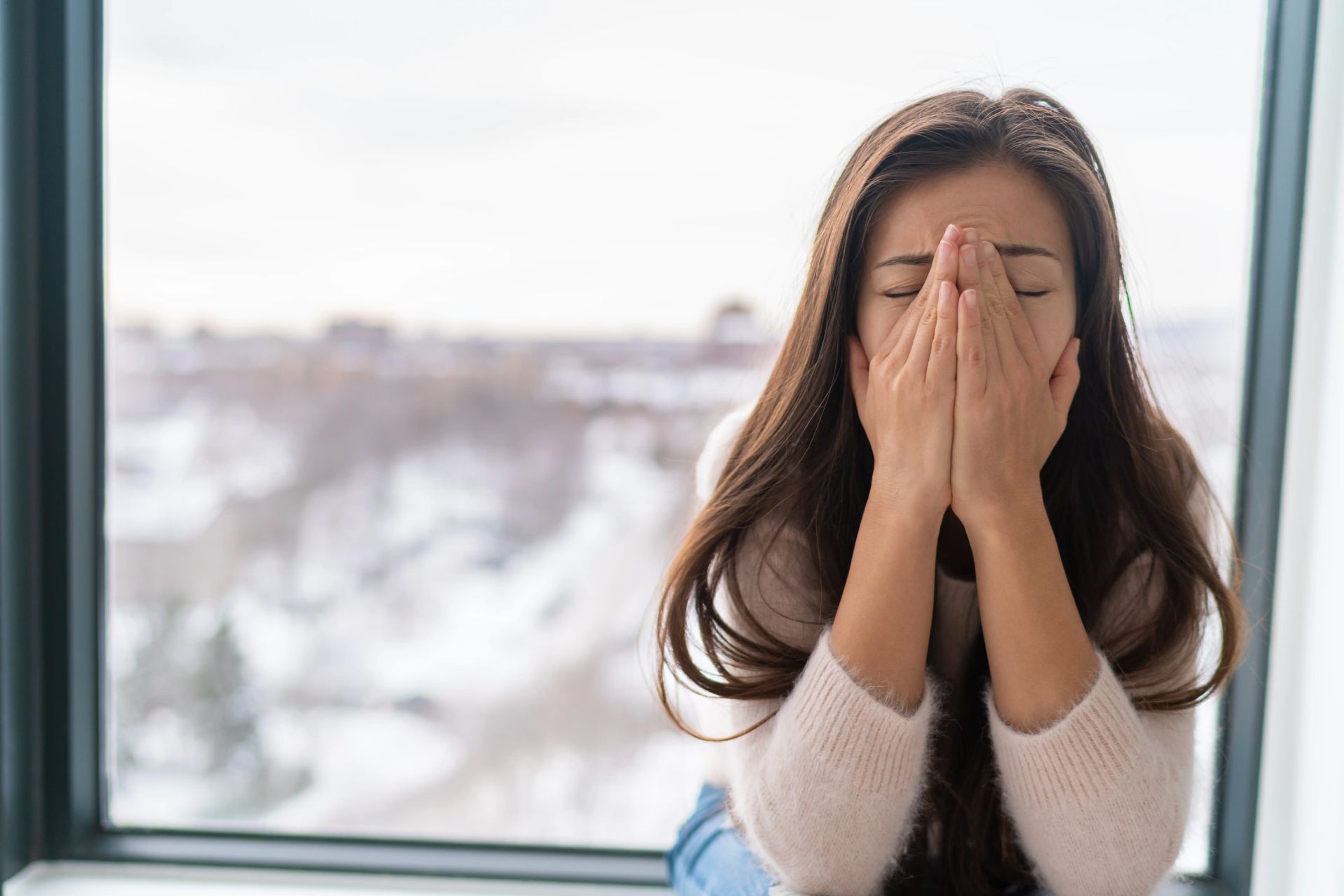Breathing Techniques in Yoga for Anxiety and Stress Management
In today’s fast-paced world, anxiety and stress have become common companions for many. The constant demands of work, family, and societal expectations can leave us feeling overwhelmed and disconnected from ourselves. Anxiety and stress are among the most prevalent mental health concerns globally, affecting millions of individuals across age groups. According to the World Health Organization (WHO, 2023), anxiety disorders affect more than 300 million people
worldwide. While conventional treatments such as cognitive-behavioral therapy (CBT) and pharmacological interventions are effective, complementary practices like yoga have gained recognition as accessible and evidence-based strategies for stress regulation. While modern medicine offers many ways to manage stress, one of the most accessible and powerful tools lies in the ancient practice of yoga. Among yoga practices, breathing techniques (pranayama) stand out as powerful tools for modulating the autonomic nervous system, improving emotional regulation, and reducing physiological symptoms of stress.
The Science of Breath and Stress Regulation
Breathing patterns directly influence the autonomic nervous system. Shallow, rapid breathing is associated with activation of the sympathetic nervous system (fight-or-flight response), which increases heart rate, elevates cortisol, and perpetuates anxiety (Jerath et al., 2015). Conversely, slow, diaphragmatic breathing stimulates the parasympathetic nervous system (rest-and-digest response), enhancing vagal tone, lowering blood pressure, and promoting calmness (Porges, 2011). A meta-analysis by Zaccaro et al. (2018) demonstrated that slow breathing techniques significantly reduce anxiety and improve heart rate variability (HRV), a biomarker of stress resilience. Similarly, Streeter et al. (2012) proposed that yoga breathing enhances gamma- aminobutyric acid (GABA) activity, a neurotransmitter crucial for anxiety regulation.
Breathing is more than just a physiological process; it directly connects the body, mind, and emotions. By consciously regulating the breath, we can activate the body’s relaxation response, reduce stress hormones, and restore balance to the nervous system.
How Breathing Impacts Stress and Anxiety
When we’re stressed or anxious, the body shifts into “fight-or-flight” mode. Breathing becomes shallow and rapid, heart rate rises, and muscles tense. This state, governed by the sympathetic nervous system, is meant for short-term survival, but when prolonged, it leads to chronic stress, irritability, and even physical illness. Yogic breathing reverses this response. By slowing and deepening the breath, we stimulate the parasympathetic nervous system (the “rest-and-digest” mode). This calms the mind, lowers blood pressure, and improves emotional regulation.
Tips for Incorporating Yogic Breathing into Daily Life:
- Start small: Just 5 minutes of practice daily can make a noticeable difference.
- Consistency matters: Practicing at the same time each day (morning or bedtime) enhances results.
- Create a calming space: Dim lighting, gentle music, or aromatherapy can deepen relaxation.
- Pair with movement: Combine breathing with gentle yoga postures for even greater stress relief.
- Use in the moment: During stressful situations (work presentations, exams, arguments), pause and take 3–5 mindful breaths.
Evidence-Based Yogic Breathing Techniques
1. Diaphragmatic (Belly) Breathing
Evidence: Practicing diaphragmatic breathing for 20 minutes daily was shown to significantly reduce cortisol levels and improve mood in adults with high stress (Ma et al., 2017).
How to practice:
- Sit or lie down comfortably.
- Place one hand on the chest and the other on the belly.
- Inhale deeply through the nose, allowing the belly (not the chest) to rise.
- Exhale slowly, letting the belly fall.
- Continue for 5–10 minutes.
Why it helps:
This technique encourages full oxygen exchange, reduces tension, and signals safety to the brain.
2. Nadi Shodhana (Alternate Nostril Breathing)
Evidence: A randomized controlled trial found that alternate nostril breathing significantly reduced perceived stress and improved cardiovascular function in young adults (Pal et al., 2014).
How to practice:
- Sit with a straight spine.
- Using your right hand, place the thumb on the right nostril and the ring finger near the left nostril.
- Close the right nostril with your thumb and inhale through the left.
- Close the left nostril with your ring finger, release the right nostril, and exhale.
- Inhale through the right, close it, and exhale through the left.
- Repeat for 5–7 cycles.
Why it helps: Balances the two hemispheres of the brain, calms racing thoughts, and enhances mental clarity.
3. Ujjayi (Ocean Breath)
Evidence: Research suggests that ujjayi breathing, when combined with asanas, improves vagal activity and lowers anxiety scores in clinical populations (Sengupta, 2012).
How to practice:
- Sit comfortably with your spine tall.
- Inhale deeply through the nose, slightly constricting the throat (like fogging a mirror but with the mouth closed).
- Exhale through the nose with the same gentle throat constriction, creating a soft ocean-like sound.
- Continue for several minutes.
Why it helps: The sound and rhythm create a meditative focus, reduce restlessness, and anchor awareness to the present moment.
4. Bhramari (Bee Breath)
Evidence: Bhramari pranayama was shown to decrease sympathetic activity and improve relaxation in individuals with anxiety symptoms (Kuppusamy et al., 2018).
How to practice:
- Sit in a quiet place with eyes closed.
- Inhale deeply through the nose.
- On exhalation, make a gentle humming sound, like a bee.
- Keep the lips sealed and feel the vibration in the head and chest.
- Repeat for 6–8 rounds.
Why it helps: The vibrations soothe the nervous system, reduce mental chatter, and are especially useful before sleep.
5. Box Breathing (Four-Square Breathing)
Evidence: Though not traditionally yogic, box breathing is used in clinical and military settings. Studies show it reduces stress perception and stabilizes HRV (Nivethitha et al., 2016).
How to practice:
- Inhale for a count of 4.
- Hold the breath for 4 counts.
- Exhale for 4 counts.
- Hold again for 4 counts.
- Repeat for 5–10 rounds.
Why it helps: Commonly used by athletes and even military personnel, this technique stabilizes the nervous system, builds resilience, and helps during acute stress or panic.
Practical Applications
- Duration: Even 5–10 minutes daily practice can significantly reduce perceived stress levels.
- Clinical settings: Pranayama is increasingly integrated into psychiatric and primary care practices as an adjunct to traditional treatment for anxiety disorders (Pascoe et al., 2017).
- Accessibility: Breathing techniques require no equipment, can be practiced anywhere, and have minimal side effects.
Conclusion
Breathing is the bridge between the body and mind. With regular yogic breathing practice, you can transform stress into serenity and anxiety into inner strength. Breathing techniques in yoga represent a safe, cost-effective, and scientifically supported approach to managing anxiety and stress. By activating parasympathetic pathways, improving vagal tone, and enhancing emotional regulation, pranayama offers both immediate and long-term benefits for mental health. As research continues to expand, the integration of yogic breathing into healthcare and daily life highlights its value as both a preventive and therapeutic intervention.
Chief Preceptor of Clinical Practicum Program – Dr. Okah Anyokwu
Director of Clinical Practicum Program – Xavier Hicks











